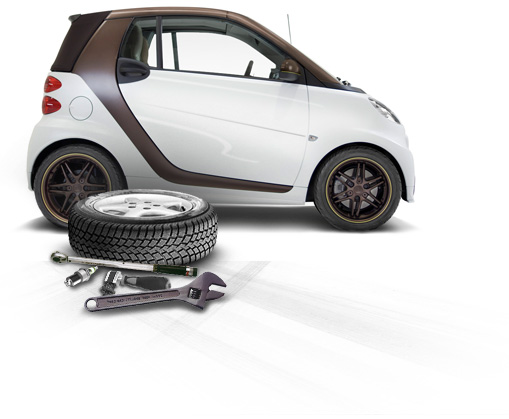
How to get the maximum advantage from your tyres
An easy and cheap way to increase your tyres’ life is the regular maintenance. Check your tyres regularly, either at home or when you visit a garage.
List of points to check:
- Check the tyres’ air pressure, according to the manufacturer’s regulations.
- Check whether there are any tears, bulges, or any signs of wear on the sides.
- Check the depth of the tread (see indicator tread wear tyre).
- Clean dust around valves, put covers on all valves and check for possible leaks, especially after pumping.
- Remove stones or any other items from the tread.
- Make an alignment test of the vehicle and be sure that the front tyres don’t show any signs of severe damages.
- If there are any signs of damage due to wheel blocking, you have to check your brakes.
- You have to make a wheel balancing between front wheels and tyres, if you notice any wheel shaking, vibrations or any tread wear.
Tyre check
It is of vital importance to check the tyres before, during and at the end of long distance journeys.
Notice the following
- Does the tread or sides show any dissimilar damage?
- Are there any signs of damage (tears, bulges etc)?
- Are there any lodged stones or sharp items between the treads?
Remove with a suitable tool any small stones etc, without damaging the rubber.
Other lodged items, like nails, must not be removed since the tyre is still pumped, until you take the vehicle to a tyre repair store. If you pull out a sharp item lodged in a tyre, the result will be a flat tyre. It is better to continue driving if it’ s safe, instead of changing a flat tyre in a side street.
Tyre pressure
The air is very important to keep your tyres in good condition. The right air pressure gives the best performance and the maximum life of the tyres. Driving the vehicle while tyres have less air pressure, is a sure way to minimize your tyres’ life, for this causes damage/strain to the sides, that are eliminated by the tread and the air of the tyre. It might also be the cause of bad driving or tyre puncture, while the vehicle is moving in a high speed.
- Pressure of tyres should be checked when these are cold.
- Right air pressure is given in the vehicle manual.
Preserving tyres
Always check for leaks from the valves (especially after pumping tyres) and replace any missing cover valves. If there is any dissimilar damage on the tyres, the tyres must be checked in order to assure wheel balancing.
Avoid tyre problems
The three most important reasons for tyre problems are:
- Problems related to low air pressure
Research, with the participation of tyre mechanic repairers, concluded that 25% of all checked tyres had 10% lower air pressure than the normal. Low air pressure is one of the basic reasons for quick damage of the ώμους, dissimilar damage of the tread and early damage to the tyres. However, high air pressure could also cause bad driving, early and severe damage to the tyres. - Danger from overloading
It is illegal to overload vehicles with heavier cargo than the indicated. Overloading exerts pressure on the tyres, increases normal deformation and causes overheating. This leads to fast wear, easy to damage after a collision.Always check vehicle’s manual for increased pressure during complete loading. - Consequences of high speed drivingDriving long distances on a high speed causes overheating. The result of high speed is fast wear tyre and deformation.Keep tyres in good condition, right air pressure and drive only up to the limited speed, indicated for the tyres.



